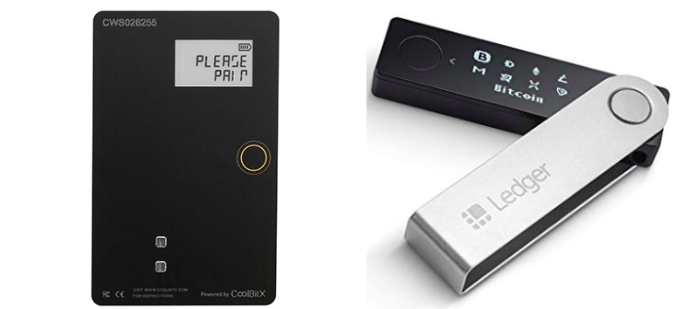Despite being firmly entrenched in a bear market cycle with a negative global macro-outlook, cryptocurrency adoption continues to grow. Unfortunately, many new users attracted to the industry in the last couple of years have had to find out the risks of the space and the importance of self-custody over one’s crypto the hard way.
Centralized exchanges are a great on-ramp for many new users unfamiliar with the technology. In addition, many offer educational services and benefits. However, there is no shortage of the dangers of giving up control over your crypto. In the past, users lost their entire accounts when an exchange collapsed, like QuadrigaCX or Mt.Gox. Earlier in 2022, Coinbase, the largest crypto exchange in the US, divulged that cryptocurrencies it holds on behalf of its customers could be potentially included in the bankruptcy estate, and customers would be treated as general unsecured creditors.
#1 Ledger Nano Series
The Ledger Nano series is one of the most popular cold storage wallet series on the market. They are especially useful for people new to the industry. The Ledger Nano series are small, compact, and easy to use while offering one of the most secure devices.
Ledger is a non-custodial corporation. The cold storage devices are deliberately devised in a way that nobody other than you ever sees or has access to your private key seed phrase. This is an essential feature for the security of the device but also puts the entire onus on the user. If the device is lost or broken and the seed phrase is lost, there is no way to recover your crypto. You essentially become your bank and custodian.
The Ledger Nano S is still a great option for new users. Since it came out in 2016, it has been one of the most reliable cold storage wallets on the market. Note: the small storage capacity means it’s only good for storing 1-3 cryptocurrencies at once.
The Ledger Nano S Plus is the updated version of the Nano S. Where the original model could only hold three crypto apps, the S+ has room for over a hundred. The S+ has several additional features that the original does not support.
The Ledger Nano X is the flagship product of Ledger. It supports over 1,300 assets and tokens, is Bluetooth enabled, and is larger than the S series.
#2 metal Crypto Wallets
Anyone using cold storage wallets knows the importance of their wallet’s seed phrase. This phrase is part of the Bitcoin Improvement Protocol (BIP39) standard that allows someone to reclaim their wallet’s private key if the physical device is lost or corrupted. It consists of a 12 to 24 randomized word phrase.
The seed phrase must remain in a secure location that only the user is aware of. Keeping a copy of your seed phrase on your computer or another device is a potential point of failure, so it is recommended to store it on a paper wallet. A paper wallet is simply a piece of paper that is accessible to the owner of the account.
metal crypto wallets take the concept of a paper wallet one step further by creating a more permanent and secure physical device for storing seed phrases. metal wallets typically use more robust and durable materials like stainless steel. As a result, they operate as a great supporting option when combined with a hardware wallet like the Ledger Nano S Plus or the Trezor Model T.
#3 GridPlus Lattice 1 Hardware wallet
If the Ledger Nano series is an excellent option for new users, then the GidPlus Lattice 1 would be the equivalent for experienced users. While both provide the same fundamental function of securing a user’s funds offline. The Lattice 1 has several additional features that make it a better choice for certain users.
The Lattice 1 operates slightly differently from other cold storage devices. It uses a Key Management Hub that allows users to manage all of their wallets from a single secure device. The Management Hub is connected to the internet and is always online. However, this is not a concern as the components that hold the private keys are always inaccessible via the internet through its secure computing environment (SCE).
Users interact with the key management hub through their separate Gridplus SafeCards. The SafeCards are hardware wallets about the same size as a credit card. They can be programmed through the management hub to be used remotely for paying with crypto or stored securely similar to other cold storage wallets.
The Lattice one is larger than the Ledger series and has a 5” touch screen. The downsides to the GridPlus Lattice 1 are that it is significantly more expensive than other cold storage wallets, and it only supports Bitcoin and/or Ethereum coins and tokens.
Overview
Whether you are new to crypto or are an experienced user, the advantages of utilizing cold storage should be clear. The early pioneers envisioned a trustless peer-to-peer technology that eliminated the need for intermediaries. The rise of exchanges has accelerated adoption greatly, but the trade-off is that fewer and fewer people understand the power of self-custody over their crypto.
Despite the trend of utilizing custodial exchanges to store crypto, cold storage remains the most secure way to store digital assets. As more people begin to wake up to this reality, they will be able to take advantage of the cold storage options described above.


